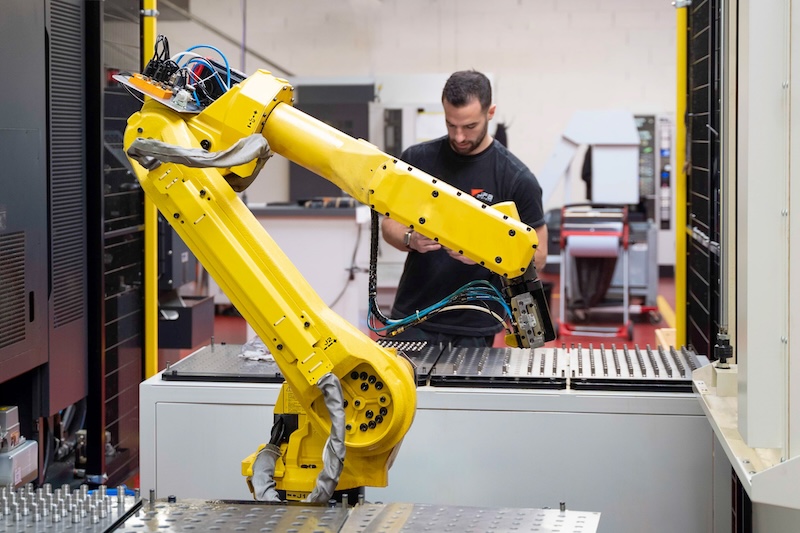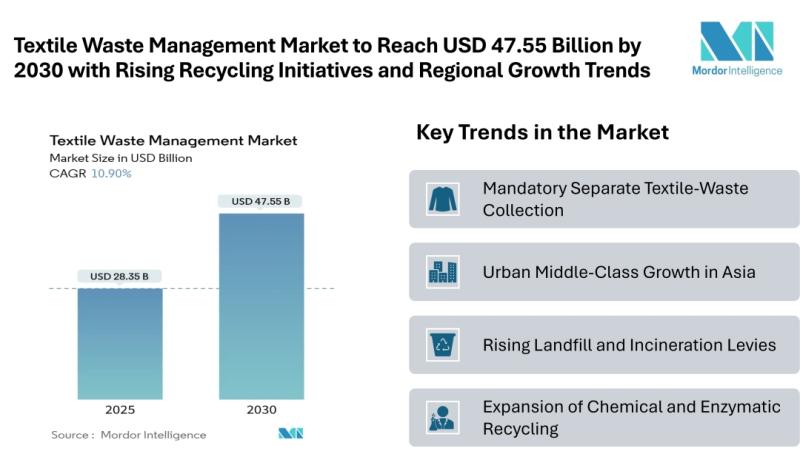UC ANR–Led FutureFood Engine Named Semifinalist in NSF Regional Innovation Engines Competition – Morning Ag Clips

The FutureFood Engine Initiative: A Strategic Approach to Sustainable Development
A cross-state initiative, the FutureFood Engine, led by the University of California Agriculture and Natural Resources (UC ANR), has been selected as a semifinalist in the National Science Foundation’s Regional Innovation Engines competition. This report outlines the initiative’s structure, objectives, and alignment with the United Nations Sustainable Development Goals (SDGs).
Addressing Food Security and Economic Viability (SDG 2, SDG 8)
The FutureFood Engine directly confronts critical challenges to food security and economic stability, aligning with SDG 2 (Zero Hunger) and SDG 8 (Decent Work and Economic Growth). The project was conceived in response to a food system under significant pressure, characterized by:
- A $49.5 billion agricultural trade deficit as of June 2025.
- A 15% reliance on imports for the nation’s food supply.
- A significant decline in domestic production since 2000, with fruit output falling by 10% and vegetable output by 23%.
- Mounting pressures on growers in California and Nevada, including water scarcity, extreme weather, and labor shortages.
By pairing advanced analytics with grower expertise, the initiative aims to enhance farm profitability, reinforce local supply chains, and create new career paths, thereby promoting sustainable economic growth and ensuring access to safe, nutritious food.
Fostering Innovation and Resilient Infrastructure (SDG 9, SDG 13)
Central to the initiative is the development of resilient infrastructure and the promotion of innovation, key tenets of SDG 9 (Industry, Innovation, and Infrastructure) and SDG 13 (Climate Action). The core of this effort is FOOD-AI, a shared digital infrastructure designed to:
- Integrate data from farms, labs, markets, and supply chains.
- Support intelligent decision-making, automation, and sustainability.
- Deploy climate-resilient breeding models to combat extreme weather.
- Provide real-time water-use analytics to address water scarcity.
- Make cutting-edge science accessible to every farm and food facility.
This technological framework provides a practical pathway to build adaptive food systems capable of withstanding climate-related pressures.
Promoting Inclusive Growth and Reducing Inequalities (SDG 10)
The FutureFood Engine is committed to reducing inequalities, a direct objective of SDG 10. The project acknowledges that many rural and tribal communities within the region face poverty rates exceeding 24% and have limited access to modern infrastructure. The initiative ensures inclusivity by:
- Guaranteeing tribal communities a significant role in governance and decision-making.
- Providing resources to help shape resilient food systems that honor cultural values.
- Supporting economic opportunities and new career paths within these communities.
- Grounding the work in eight regional demonstration hubs and community listening sessions.
Strategic Objectives and Multi-Sector Partnerships (SDG 12, SDG 17)
The project’s success relies on achieving specific targets for responsible production (SDG 12) through robust partnerships (SDG 17). Over the next decade, the Engine has established the following objectives:
- Develop and deploy more than 30 AI- and biotech-enabled tools to promote sustainable practices.
- Launch or scale 50 agrifood startups to foster a vibrant innovation ecosystem.
- Mobilize over $200 million in private investment.
- Train a workforce of 10,000 in advanced food and agriculture technologies.
This vision is supported by a diverse coalition of over 50 partners, exemplifying a multi-stakeholder approach. Key partners include:
- Academic Institutions: University of California Davis, Desert Research Institute.
- Government Bodies: Nevada Governor’s Office of Economic Development, California Department of Food and Agriculture.
- Industry and Economic Groups: Western Growers Association, California League of Food Producers, Valley Vision.
- Private Sector: Google, General Mills.
- Community and Tribal Partners: Central Valley Community Foundation, Tribal governments throughout Northern California and Nevada.
1. Which SDGs are addressed or connected to the issues highlighted in the article?
- SDG 1: No Poverty
- SDG 2: Zero Hunger
- SDG 6: Clean Water and Sanitation
- SDG 8: Decent Work and Economic Growth
- SDG 9: Industry, Innovation, and Infrastructure
- SDG 13: Climate Action
- SDG 17: Partnerships for the Goals
2. What specific targets under those SDGs can be identified based on the article’s content?
-
SDG 2: Zero Hunger
- Target 2.1: By 2030, end hunger and ensure access by all people, in particular the poor and people in vulnerable situations, including infants, to safe, nutritious and sufficient food all year round.
- The article directly addresses this by focusing on strengthening “domestic food security” and reversing the decline in domestic fruit and vegetable production to ensure a stable food supply for the nation.
- Target 2.3: By 2030, double the agricultural productivity and incomes of small-scale food producers…
- The initiative aims to “keep farms profitable” by providing growers with advanced analytics and biotechnology, which directly supports increasing their productivity and economic viability.
- Target 2.4: By 2030, ensure sustainable food production systems and implement resilient agricultural practices that increase productivity and production, that help maintain ecosystems…
- The project’s goal is to build a regional innovation ecosystem centered on “food resilience” and “sustainable, adaptive food systems” by using tools for water-use analytics and climate-resilient breeding.
- Target 2.1: By 2030, end hunger and ensure access by all people, in particular the poor and people in vulnerable situations, including infants, to safe, nutritious and sufficient food all year round.
-
SDG 9: Industry, Innovation, and Infrastructure
- Target 9.1: Develop quality, reliable, sustainable and resilient infrastructure… with a focus on affordable and equitable access for all.
- The core of the project is creating “FOOD-AI, a shared digital infrastructure” to support the agricultural sector. The initiative also emphasizes ensuring tribal communities have “a seat at the table, and the resources” to benefit, highlighting equitable access.
- Target 9.5: Enhance scientific research, upgrade the technological capabilities of industrial sectors in all countries… encouraging innovation…
- The FutureFood Engine is designed to “harness AI to create and enhance tools,” “translate decades of university research into easy-to-use digital tools,” and deploy “AI- and biotech-enabled tools,” directly aligning with upgrading technological capabilities and fostering innovation in agriculture.
- Target 9.b: Support domestic technology development, research and innovation…
- The entire initiative, led by UC Agriculture and Natural Resources, is a domestic effort to “modernize U.S. agriculture” by developing and deploying homegrown technologies like FOOD-AI to address national challenges.
- Target 9.1: Develop quality, reliable, sustainable and resilient infrastructure… with a focus on affordable and equitable access for all.
-
SDG 8: Decent Work and Economic Growth
- Target 8.2: Achieve higher levels of economic productivity through diversification, technological upgrading and innovation…
- The project aims to boost the agricultural sector’s productivity and address the “$49.5 billion agricultural trade deficit” by introducing advanced technologies and creating a more resilient and efficient food system.
- Target 8.5: By 2030, achieve full and productive employment and decent work for all…
- The article mentions the project’s goal to “open new career paths in rural communities” and “train 10,000 workers in advanced food and agriculture technologies,” directly addressing the creation of skilled jobs.
- Target 8.2: Achieve higher levels of economic productivity through diversification, technological upgrading and innovation…
-
SDG 1: No Poverty
- Target 1.2: By 2030, reduce at least by half the proportion of men, women and children of all ages living in poverty…
- The article highlights that many “rural and tribal communities in the region also contend with poverty rates above 24%.” The initiative aims to address this by creating “economic opportunity” and new career paths in these communities.
- Target 1.2: By 2030, reduce at least by half the proportion of men, women and children of all ages living in poverty…
-
SDG 13: Climate Action
- Target 13.1: Strengthen resilience and adaptive capacity to climate-related hazards and natural disasters in all countries.
- The project directly responds to challenges like “water scarcity,” “extreme weather,” and “climate extremes.” It aims to develop “climate-resilient breeding models” and “adaptive food systems” to enhance the region’s resilience to climate change.
- Target 13.1: Strengthen resilience and adaptive capacity to climate-related hazards and natural disasters in all countries.
-
SDG 6: Clean Water and Sanitation
- Target 6.4: By 2020, substantially increase water-use efficiency across all sectors and ensure sustainable withdrawals of freshwater to address water scarcity…
- The article identifies “water scarcity” as one of the most urgent challenges. The Engine will provide “real-time water-use analytics” and apply data to “farm and land management decisions” to support more sustainable water use in agriculture.
- Target 6.4: By 2020, substantially increase water-use efficiency across all sectors and ensure sustainable withdrawals of freshwater to address water scarcity…
-
SDG 17: Partnerships for the Goals
- Target 17.17: Encourage and promote effective public, public-private and civil society partnerships, building on the experience and resourcing strategies of partnerships.
- The FutureFood Engine is described as a “cross-state effort” and a “broad network” backed by “more than 50 partners,” including universities, growers, tribal governments, startups, economic development groups, and private companies like Google and General Mills. This multi-stakeholder partnership is the foundation of the entire initiative.
- Target 17.17: Encourage and promote effective public, public-private and civil society partnerships, building on the experience and resourcing strategies of partnerships.
3. Are there any indicators mentioned or implied in the article that can be used to measure progress towards the identified targets?
-
For SDG 2 (Zero Hunger) & SDG 8 (Decent Work and Economic Growth)
- Agricultural Trade Deficit: The article states a “$49.5 billion agricultural trade deficit” as a key problem. Reducing this deficit would be a clear indicator of progress.
- Domestic Production Levels: The decline in domestic fruit production (10%) and vegetable production (23%) since 2000 is a baseline metric. An increase in these production levels would indicate success.
- Number of Startups: The goal to “launch or scale 50 agrifood startups” is a specific, measurable indicator of innovation and economic growth.
- Private Investment Mobilized: The target to “mobilize over $200 million in private investment” is a quantifiable financial indicator of the project’s success and economic impact.
- Number of Workers Trained: The plan to “train 10,000 workers in advanced food and agriculture technologies” is a direct indicator of progress towards creating skilled jobs and new career paths.
-
For SDG 9 (Industry, Innovation, and Infrastructure)
- Number of Technologies Deployed: The aim to “develop and deploy more than 30 AI- and biotech-enabled tools” is a specific indicator of technological advancement and innovation.
-
For SDG 1 (No Poverty)
- Poverty Rate: The article mentions “poverty rates above 24%” in some rural and tribal communities. A reduction in this rate within the project’s regions would be a key indicator of its social impact.
-
For SDG 6 (Clean Water) & SDG 13 (Climate Action)
- Adoption of Analytics and Models: While not a number, the implementation and use of “real-time water-use analytics” and “climate-resilient breeding models” by farms are implied indicators. Progress could be measured by the number of farms or acreage managed using these new tools.
-
For SDG 17 (Partnerships for the Goals)
- Number of Partners: The article states the project is “backed by more than 50 partners.” The maintenance or growth of this coalition is an indicator of the partnership’s strength and effectiveness.
4. Table of SDGs, Targets, and Indicators
| SDGs | Targets | Indicators Identified in Article |
|---|---|---|
| SDG 1: No Poverty | 1.2: Reduce poverty in all its forms. | Poverty rates in rural and tribal communities (currently cited as “above 24%”). |
| SDG 2: Zero Hunger | 2.1: Ensure access to food. 2.3: Double agricultural productivity and incomes. 2.4: Ensure sustainable and resilient food production. |
Decline in domestic fruit production (10% since 2000). Decline in domestic vegetable production (23% since 2000). |
| SDG 6: Clean Water and Sanitation | 6.4: Increase water-use efficiency and address water scarcity. | Implementation of “real-time water-use analytics” on farms. |
| SDG 8: Decent Work and Economic Growth | 8.2: Achieve higher levels of economic productivity through innovation. 8.5: Achieve full and productive employment. |
Agricultural trade deficit ($49.5 billion). Number of workers to be trained (10,000). Amount of private investment to be mobilized ($200 million). |
| SDG 9: Industry, Innovation, and Infrastructure | 9.1: Develop resilient infrastructure. 9.5: Enhance scientific research and upgrade technology. 9.b: Support domestic technology development. |
Number of AI- and biotech-enabled tools to be developed and deployed (30). Number of agrifood startups to be launched or scaled (50). |
| SDG 13: Climate Action | 13.1: Strengthen resilience and adaptive capacity to climate-related hazards. | Development and use of “climate-resilient breeding models.” |
| SDG 17: Partnerships for the Goals | 17.17: Encourage and promote effective public, public-private and civil society partnerships. | Number of partners in the coalition (“more than 50”). |
Source: morningagclips.com

What is Your Reaction?
 Like
0
Like
0
 Dislike
0
Dislike
0
 Love
0
Love
0
 Funny
0
Funny
0
 Angry
0
Angry
0
 Sad
0
Sad
0
 Wow
0
Wow
0

















































































